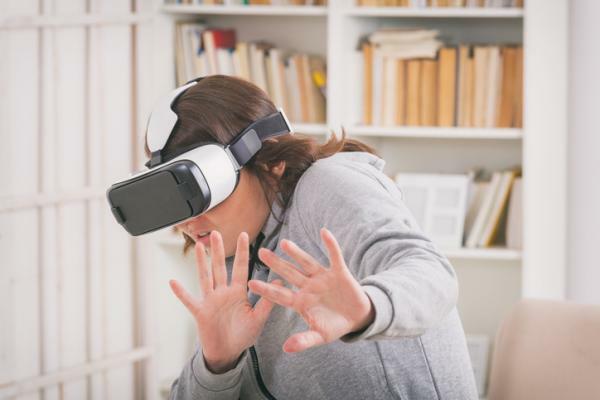
At present there are different psychological techniques used for the treatment of disorders of more common anxiety, such as phobias, social anxiety, post-traumatic stress disorder, or obsessive compulsive. One of the best known and that works best is the exposure technique, a therapeutic method that uses different procedures to reduce the patient's anxiety. What does it consist of? Is it as useful as suggested?
In this Psychology-Online article we will explain in detail what is the exposure technique in psychology, what are its characteristics, as well as the most used variants and how it can help us overcome our anxiety problems.
Index
- What is the exposure technique?
- Objective of the exposure technique
- Characteristics of the exposure technique
- Example of the exposure technique
- Steps for the exposure technique
What is the exposure technique?
Exposure technique is a type of therapeutic procedure used in clinical psychology to treat anxiety disorders
This working method bases its effectiveness on the fact that the patient learns, based on prevent you from avoiding or escaping, that the feared stimulus does not pose a real threat, which ultimately leads to anxiety symptoms are reduced and end up submitting. In other words, the exposure technique interrupts avoidant behaviors (which increase fear and anxiety) and makes it easier for the patient to cope with the psychophysiological and cognitive signs of the anxiety.
A treatment related to this therapeutic technique is response prevention exposure, a widely used method for the treatment of obsessive-compulsive disorder (OCD) in which the patient is exposed to the stimulus caused by fear repeatedly, without being able to take any action or compulsion to neutralize your fear. This technique has also been shown to be effective in treating posttraumatic stress and some specific phobias.
Objective of the exposure technique.
The goal of the exposure technique is to create a safe environment in which the person can reduce anxiety, reduce the avoidance of feared situations and improve the quality of life. It is believed that this technique could help patients in a number of ways; Let's see how:
- Habituation: Over time, people find that anxiety reactions to feared objects or situations diminish.
- Extinction: Exposure can help weaken previously learned associations between feared objects, activities or situations, and poor outcomes.
- Self-efficacy: Exposure can help show the client that he or she is able to cope with her fears and can handle feelings of anxiety. Here you will find more information about how to overcome fears.
- Emotional processing: During the exposure, the client can learn to join new and more realistic beliefs about feared objects, activities or situations, and can become more comfortable with the experience of fear.
Characteristics of the exposure technique.
There are several variations of the exposure technique and it is the psychologist who will determine which of them is the most effective or convenient for each individual patient. Let's see which are the most common and their characteristics.
- Live exhibition. The live exposure technique is performed directly in front of an object, a situation or an activity that the patient fears in their real life. For example, a person with a fear of cockroaches could be instructed to handle these insects with their hands, or someone with social anxiety you could give a speech in front of an audience.
- Exposure in imagination. Imaginative exposure, as the name suggests, involves vividly imagining the feared object, situation, or activity. For example, someone with PTSD may be asked to recall and describe her traumatic experience to reduce feelings of fear and anxiety.
- Exposure through virtual reality. In some cases, virtual reality technology can be used when live exposure is impractical or not effective enough. For example, someone with fear to fly You could take a virtual flight in the psychologist's own office, using a virtual reality equipment that provides the typical images, sounds and smells of an airplane.
- Interoceptive exposure. Interoceptive exposure involves deliberately eliciting physical sensations that are harmless, but at the same time feared by the patient. For example, someone with panic disorder might be instructed to run and race her heart, and thus learn that the sensations of a panic attack They are not really dangerous and that is nothing more than a physiological function of your body.
Furthermore, exposure therapy can also be carried out in different ways. Let's see which are the most used procedures:
- Gradual exposure: The psychologist helps the client to build a hierarchy of fear of exposure, in which the objects, activities or situations feared are classified according to their difficulty. It is usually started with light or moderately difficult exposures, progressing to more difficult exposures.
- Exposure due to flooding: it's about using the exposure fear hierarchy to begin the exposure with the most difficult tasks.
- Systematic desensitization: In some cases, exposure can be combined with relaxation exercises to make the patient feel that they are more manageable, and to associate feared objects, activities, or situations with feelings of relaxation.

Example of the exposure technique.
To understand better how the exposure technique is performed We are going to put an example. In our case, we will apply the technique to a person with panic disorder.
In these cases, the goal is desensitize the patient to psychophysiological symptoms that are generated before and during a panic attack; It is also necessary to modify the beliefs and cognitive schemes that the person has about their own physical sensations through cognitive restructuring (a complementary technique to the technique of exposition).
To address panic disorder, the most useful thing is to do the interoceptive exposure technique- The symptoms of a panic attack are simulated in a controlled context in which the patient feels safe (for example, the consultation psychologist or any quiet space), so that in this way the psychophysiological response is weakened (conditioning interoceptive).
For 1 to 2 minutes, the patient is asked to run, move their head from side to side, or turn around in a swivel chair to make your heart race and the physical sensations and typical symptoms of a heart attack appear. panic. This induction of symptoms it should be performed until the patient has no symptoms of anxiety and complete desensitization has occurred.
The exercises should be short (between 1 and 3 minutes) and the person should assess the level and intensity of anxiety so that the psychologist can record changes and improvements during the procedure. When the patient is already able to better control sensations in the later phases of therapy, desensitization exercises can be carried out doing more natural activities (for example, climbing the stairs at home or practicing your sport Favourite).
Steps for the exposure technique.
To correctly perform the exposure technique, it is important to first determine what is causing fear in the patient, and then a series of steps must be followed:
- First, a hierarchy from 0 to 100 (from minimum to maximum anxiety) with situations in which the presence of the feared stimulus may occur. For example, from hearing a bark from afar (the least anxious situation) to having a dog in front of you and being able to touch and caress it (the highest anxiety situation), in case of fear of dogs.
- The patient is then asked to enter a state of deep relaxation. Once relaxed, he is guided to imagine scenes and situations in which the feared stimulus is present. This process is called systematic desensitization and is used to inhibit anxiety symptoms.
- In case the exposition in imagination is not useful enough, it is possible to resort to the exposition live: facing the patient to the stimulus feared in its real form in controlled situations and ensuring that the approach is gradual (unless the flood exposure technique, which confronts the person abruptly with the feared stimulus, without the option of escape).
- The number of sessions may vary from one subject to another and will depend on the intensity of the initial anxiety symptoms, as well as other psychological and contextual variables; Weekly sessions of between 30 minutes and 1 hour and a half can be held, interspersing the exhibition with breaks, etc. The important thing is that the psychologist is the one who guides the procedure based on the patient's needs.
This article is merely informative, in Psychology-Online we do not have the power to make a diagnosis or recommend a treatment. We invite you to go to a psychologist to treat your particular case.
If you want to read more articles similar to Exposure technique in psychology: what it is and characteristics, we recommend that you enter our category of Clinical psychology.
Bibliography
- Fernández, M. Á. R., García, M. I. D., & Crespo, A. V. (2012). Cognitive Behavioral Intervention Techniques Manual. Desclée de Brouwer.
- Marlatt, G. A., Parks, G. A., & Witkiewitz, K. (2002). Clinical guidelines for implementing relapse prevention therapy. Addictive Behaviors Research Center, Department of Psychology, University of Washington.


